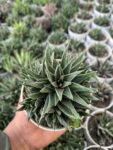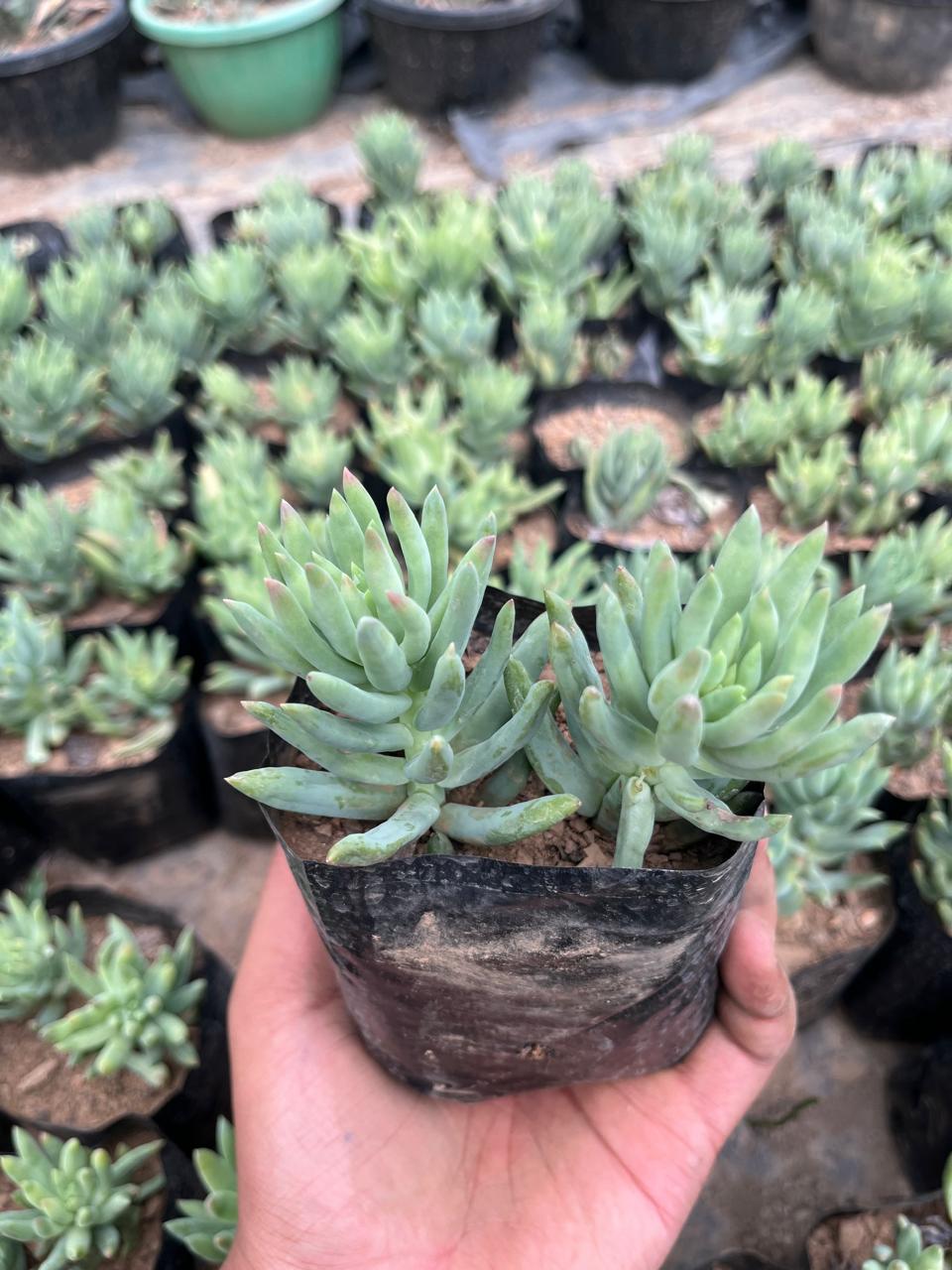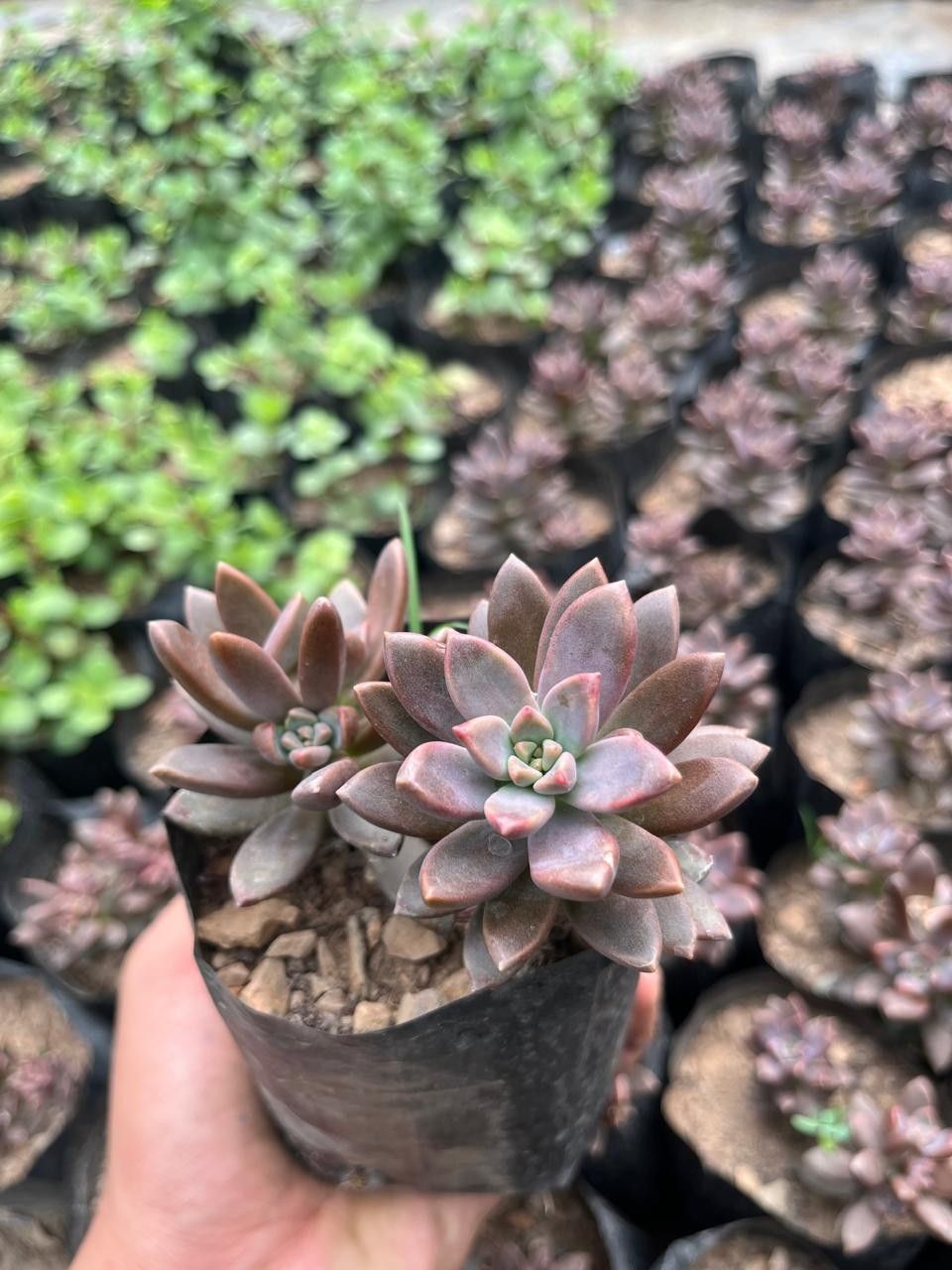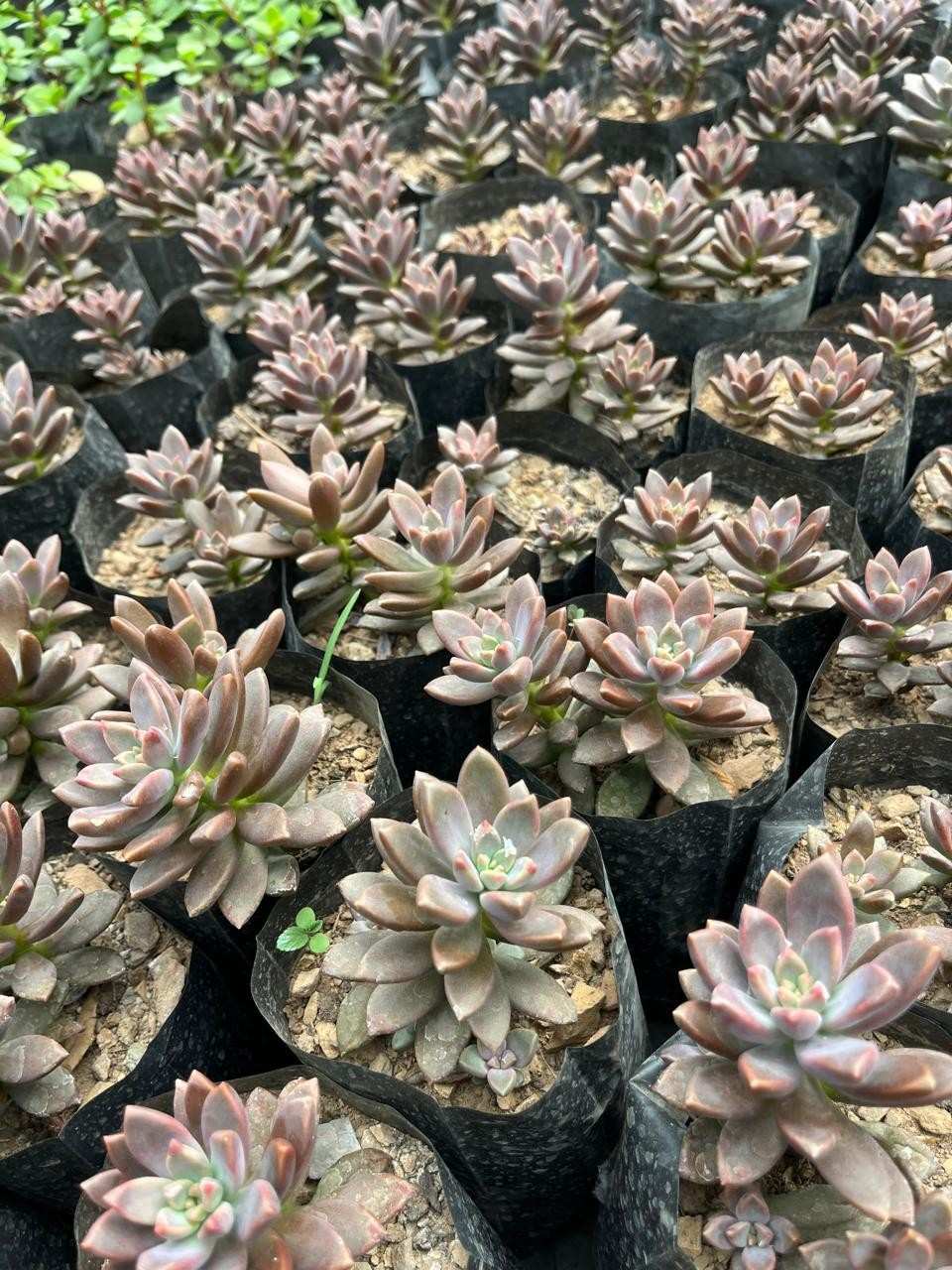Haworthia herbacea
₹229 Original price was: ₹229.₹129Current price is: ₹129.

Haworthia herbacea
₹229Original price was: ₹229.₹129Current price is: ₹129.Request a Call Back
- Delivery & Return
Delivery
We offer delivery across India, and delivery times will vary depending on your location.- Delivery Timeframes: We aim to deliver orders within 5-10 business days from the order date. However, this timeframe is not guaranteed and may vary due to unforeseen circumstances.
- Shipping Costs: Delivery fees will be calculated and displayed at checkout.
- Delays: We are not responsible for delays caused by courier companies, natural disasters, or other external factors beyond our control.
1. Refund Eligibility
To be eligible for a refund, please ensure the following conditions are met:- Unboxing Video: You must record a clear unboxing video within 1 day of receiving your plants. The video should show the condition of the affected plants upon arrival.
- Video Submission: Submit the unboxing video to our customer support team via email at succulenthubindia@gmila.com within the 1-day period.
- Original Packaging: The plants must still be in their original packaging in the video to verify the condition upon arrival.
2. Non-Eligible Returns
Refunds or exchanges will not be granted under the following circumstances:- Plants that have been repotted or removed from the original packaging.
- Issues raised beyond the 1-day period after delivery.
- Lack of an unboxing video or failure to submit the video within the required timeframe.
3. Process for Refunds
Once the unboxing video is received and reviewed:- If the plants are found to be damaged or defective due to delivery issues, we will approve your refund or offer a replacement.
- Refunds will be processed within 5-10 business days after approval, and a credit will automatically be applied to your original method of payment.
4. Damaged or Defective Items
For damaged or defective plants that meet the eligibility criteria:- You may request either a replacement or a full refund.
- We may request further details to verify the condition of the plants.
5. Exchanges
If you’d like to exchange the damaged plants for a replacement, this must also be requested within 1 day of delivery, and the unboxing video requirement applies.6. Late or Missing Refunds
If you haven’t received a refund within the designated period:- Please check your bank or credit card statement again.
- Contact your bank or card issuer as processing times may vary.
- Ask a Question

Haworthia herbacea
₹229Original price was: ₹229.₹129Current price is: ₹129.Ask a Question
... people are viewing this right now
Description
- Dispatch in 2-3 days
- Country of origin: India
- It’s Compulsory to make an unboxing video of the parcel for refunds within 24 hours.
- Bare Rooted
Haworthia herbacea is a charming, small succulent from the Haworthia genus, known for its rosette of fleshy, triangular leaves. The leaves are typically green with a pattern of white, translucent spots or stripes, giving the plant a textured and somewhat glassy appearance. This species, like many in the Haworthia genus, is appreciated for its low-maintenance care and unique look, making it a popular choice for succulent collectors.
Key Characteristics:
- Leaves: The leaves are thick, fleshy, and triangular, with a slightly rough texture. They often have white, translucent markings or spots, which give them a distinctive appearance.
- Size: Haworthia herbacea remains small, usually growing up to 3-4 inches (7-10 cm) in diameter, making it ideal for small spaces or container gardening.
- Flowers: It produces small, tubular, white to pale pink flowers on long, slender stems, typically during the spring or summer.
Care Tips for Haworthia herbacea:
- Light:
- Haworthia herbacea prefers bright, indirect light. It can tolerate some direct sunlight, especially in the early morning or late afternoon, but too much direct sun can cause the leaves to become discolored or scorched. If grown indoors, a spot near a north or east-facing window is ideal.
- Watering:
- Water the plant when the top inch of soil feels dry. Use the “soak and dry” method: water thoroughly, allowing excess water to drain away, and then wait for the soil to dry out completely before watering again. Overwatering can lead to root rot, which is a common issue with Haworthias.
- Soil:
- Use a well-draining succulent or cactus mix. You can improve drainage by adding perlite, pumice, or coarse sand to the soil. Proper drainage is essential to prevent water from pooling around the roots.
- Temperature:
- Haworthia herbacea thrives in temperatures between 65-80°F (18-27°C). It can tolerate cooler temperatures down to around 50°F (10°C) but is not frost-tolerant. Protect the plant from cold drafts and frost.
- Fertilizing:
- Fertilize sparingly during the growing season (spring and summer) with a diluted succulent or cactus fertilizer. Over-fertilizing can cause the plant to grow too quickly, leading to a loss of its compact form.
- Propagation:
- Haworthia herbacea can be propagated through offsets (pups) that form around the base of the plant. Carefully remove the offsets and allow them to callous for a day before planting them in well-draining soil. It can also be propagated from leaf cuttings, though this method is slower.
- Pests:
- This plant is relatively pest-resistant but can occasionally attract mealybugs or spider mites. Regularly inspect the plant and treat any pests with insecticidal soap or neem oil.
Display Ideas:
- Miniature Gardens: Haworthia herbacea is perfect for small pots or decorative containers, adding a touch of green to compact spaces.
- Windowsill Decor: Its low light tolerance makes it an excellent choice for windowsills or other areas with indirect light.
- Office Plants: Its small size and easy care make it ideal for office desks or workspaces.
Reviews (0)
Based on 0 reviews
0.00
Overall
|
|
|
0% |
|
|
|
0% |
|
|
|
0% |
|
|
|
0% |
|
|
|
0% |
Be the first to review “Haworthia herbacea” Cancel reply
Categories: Haworthia, Succulent
Tags: best succulent, Bhimtal, cheap succulent, Haworthia, Haworthia herbacea, herbacea, Live succulent, low price, Mini succulent, plant, plant Potted, succulent, Succulent arrangement, Succulent collection, Succulent gift box, succulent hub, Succulent starter kit, variety pack, www.succuelenthubindia.com
Close
Tags
- Aloe
- arborescens
- baby sun rose
- best succulent
- Bhimtal
- buy succulent online India
- cheap succulent
- Crassula
- Crassula arborescens
- Crassula ovata
- Echeveria
- Echinopsis
- Haworthia
- http://www.succuelenthubindia.com
- Jade
- Jade Plant
- Kalanchoe
- Laxmi Kamal
- Live succulent
- low-maintenance plant
- low price
- mammillaria
- Mini succulent
- Money Tree
- or Lucky Plant
- pastel succulent
- plant
- plant Potted
- rare succulents India
- Rattail crassula
- red
- Sedum
- String
- String of Hearts
- succulent
- Succulent arrangement
- Succulent collection
- Succulent gift box
- succulent hub
- Succulent Hub India
- Succulent starter kit
- turtle vine
- variegated baby sunrose
- variety pack
- www.succuelenthubindia.com
Related Products
Zebra Haworthia
₹149 Original price was: ₹149.₹79Current price is: ₹79.
Add to cart
Rated 5.00 out of 5
Out of stock
Sedeveria ‘Harry Butterfield’ a.k.a Super Donkey Tail
₹99 Original price was: ₹99.₹49Current price is: ₹49.
Read more
Out of stock
Chocolate Sedum
₹109 Original price was: ₹109.₹49Current price is: ₹49.
Add to cart
Rated 5.00 out of 5




















Reviews
There are no reviews yet.